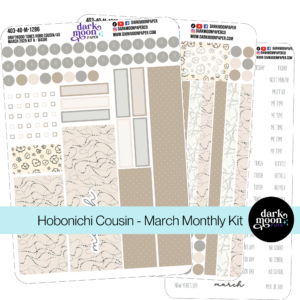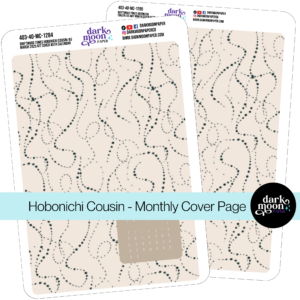Life goal planning helps you turn dreams into actionable steps for a more organized, focused, and satisfying life. A life goal planner provides structure, accountability, and motivation by breaking big goals into smaller tasks. Here’s how to get started:
Your planner is more than a notebook – it’s a roadmap to achieving what matters most. Start today and take control of your future!
Your planner should match your personal style and how you like to organize your life. Whether you prefer something simple or a splash of color, focus on these important features:
| Feature | What to Look For |
|---|---|
| Layout Style | Weekly or monthly spreads that align with your goals |
| Size | Compact enough to carry with you daily |
| Paper Quality | Durable pages that work well with your favorite pens |
| Extras | Templates for goals, blank pages, or yearly overviews |
A planner that looks good can keep you motivated and make planning more enjoyable. Add some personality with stickers, washi tape, or a color-coded system to organize your goals and tasks.
Here are a few ways to make your planner pop:
Once your planner is ready, you can focus on setting and following through with your goals.

Turn your aspirations into clear, actionable objectives with the SMART goal framework. Each goal should be Specific, Measurable, Achievable, Relevant, and Time-bound. Here’s how it works:
| SMART Component | Example |
|---|---|
| Specific | "Run a half marathon" instead of "Get fit" |
| Measurable | "Save $500 monthly" instead of "Save money" |
| Achievable | "Read 12 books in 6 months" |
| Relevant | Goals that match your personal priorities |
| Time-bound | "Finish certification by December 2025" |
Once you’ve outlined your SMART goals, break them into smaller tasks to make progress more manageable.
Big goals can feel overwhelming without a clear plan. To stay on track, cut out tasks that don’t contribute to your objectives and focus on meaningful actions.
Break your goals into these levels:
By dividing your goals this way, you can tackle them step by step and stay organized.
Tracking your progress helps you stay motivated and identify areas for improvement. Studies suggest that people who track their goals regularly experience less stress and greater satisfaction in life [1].
| Tracking Method | Best Used For | How to Use It |
|---|---|---|
| Habit Tracker | Daily or weekly tasks | Check off completed items |
| Progress Bar | Visual progress | Update the percentage as you move forward |
| Milestone Chart | Big achievements | Mark off completed milestones |
| Monthly Review | Overall progress | Reflect and make adjustments |
Set aside time each month to review your progress. Ask yourself:
This approach ensures you stay focused and adaptable as you work toward your goals. </
Turn your life goal planner into a tool that not only keeps you organized but also inspires and motivates you. By blending creative touches with practical planning, you can stay on track without losing sight of what drives you.
Stickers can make your planner both functional and visually engaging. Here’s how you can use different types:
| Sticker Type | How to Use |
|---|---|
| Functional | Add checklist stickers to monitor weekly habits |
| Decorative | Use quotes or themed stickers to spotlight goals |
| Milestone | Highlight achievements and important deadlines |
| Tracker | Create progress bars for your long-term goals |
Place stickers thoughtfully to emphasize priorities and celebrate wins. For example, milestone stickers can serve as motivational markers along your timeline.
Design layouts that are both visually appealing and practical for tracking your goals. Consider incorporating:
Your layouts should evolve with your needs. Strive for a balance between creativity and structure to keep things organized without losing functionality.
Adding gratitude journaling to your planner can help you stay positive and focused on your goals. Research shows that writing down your goals makes you 75% more likely to achieve them [2]. Dedicate a section to reflect on:
Practicing gratitude regularly not only improves your well-being but also reinforces your commitment to your goals [1]. By combining creative elements with structured planning, your planner becomes a tool that keeps you both motivated and organized.
Turn your life goal planner into a tool you use every day to stay on track. Regular planning helps you feel less stressed and more in control [1].
Make sure your daily activities support your long-term objectives. Here’s how to break it down:
| Time Frame | Focus | Action |
|---|---|---|
| Daily | Prioritize | Pick 2-3 tasks tied to weekly goals |
| Weekly | Evaluate | Check progress and make adjustments |
| Monthly | Align | Reflect on and tweak long-term goals |
Adding personal touches like stickers or color coding can make planning more fun and motivating.
Tracking your progress is a powerful way to stay on course. A ‘Progress Dashboard’ can help you see how your daily habits, weekly achievements, and monthly milestones connect. This makes it easier to spot trends and fine-tune your approach [3][6].
Key tools for tracking:
Tracking works best when combined with a regular habit of reviewing and updating your plans.
To make planning a habit, find a time that fits your lifestyle. Just 10 minutes a day can improve your focus and productivity.
Stick to a consistent schedule, set up a distraction-free space, and keep your sessions short to stay motivated. Build in some flexibility so your planner can handle unexpected changes or new opportunities [5].
Your planner is more than just a notebook – it’s a way to turn your goals into actionable steps. By combining personal touches with a clear structure, you can stay motivated and organized. Daily tasks help you stay on track, weekly check-ins keep you accountable, and monthly reflections allow you to fine-tune your approach for long-term progress.
Using prompts and regular check-ins keeps you focused while making the process enjoyable [3]. With these core practices in place, you’re ready to start planning with purpose.
Ready to take control of your goals? Here’s how to get started:
Think of your planner as a flexible guide that adapts as you grow. By following these strategies, you’re setting yourself up for a future that’s aligned with your goals.
Now that you’ve got the basics of setting up and using your life goal planner, let’s tackle some common questions about getting the most out of it.
Here’s how to turn your planner into a powerful tool for achieving your goals:
Stickers Made for Planning
Our custom stickers are a fuss-free way to brighten up your planner pages with perfectly-sized designs that add a spark of personality to every layout.

Why use planner stickers?
Planner stickers make organizing easy, fun, and personal! Add color, creativity, and structure to every page, transforming your planner into a tool that reflects you. Perfect for tracking, decorating, and staying inspired daily!







Hello and welcome!
I’m Rachael Snow, a lifelong artist and entrepreneur, and I started Dark Moon Paper to blend my love of art, technology, and the mysterious beauty of the world around us. My sticker kits are meant to set the mood, tell a story, and give you a little escape from the ordinary.
I work from my cozy studio tucked away in the beautiful woods of Oregon, surrounded by nature and a dark night sky full of stars.